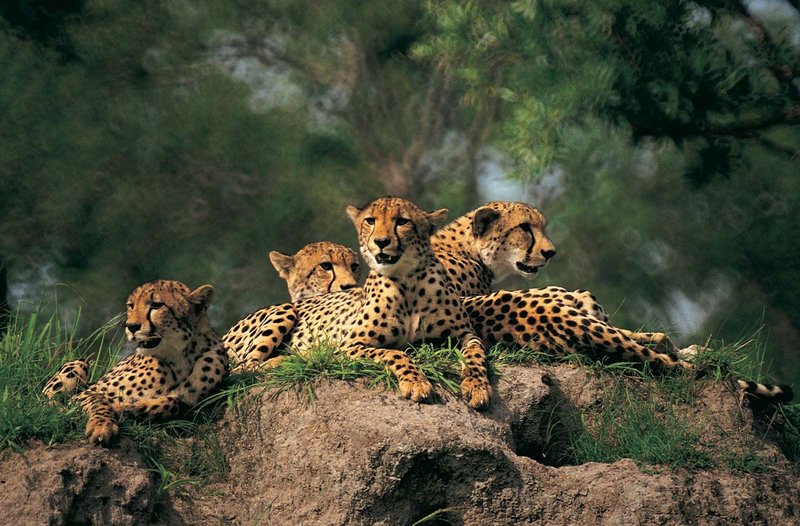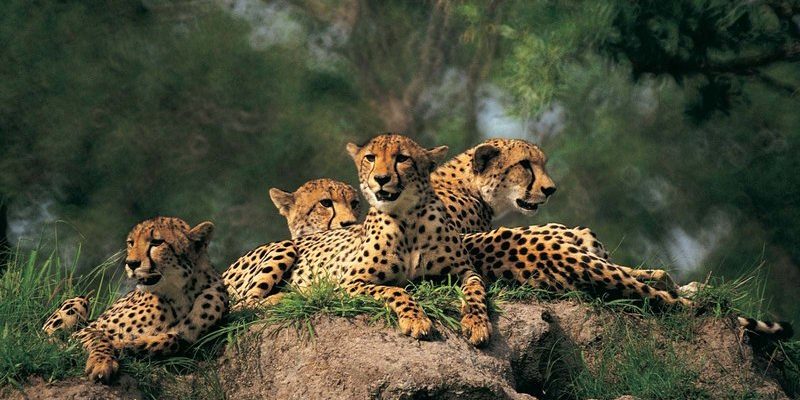
Unlike their more famous big cat relatives like lions and tigers, cheetahs are quite picky about where they live. They need plenty of space to sprint and hunt—think of them as the athletes of the animal kingdom. Their habitats are not only vast but also diverse. From the sprawling grasslands to the arid deserts, cheetahs have adapted to various terrains, but they always have a few things in common. Let’s dive deeper into where cheetahs live and how their habitats support their unique lifestyle.
Geographic Distribution of Cheetahs
Cheetahs are found primarily in Africa, but their distribution isn’t uniform across the continent. In fact, they inhabit a range of countries, each offering different landscapes and ecosystems. The largest populations are located in sub-Saharan Africa, particularly in countries like Tanzania, Namibia, and Botswana. These places provide the open grasslands and savannas where cheetahs can hunt and roam freely.
Interestingly, there is also a small population of Asiatic cheetahs—a critically endangered subspecies—located in Iran. Once spread across the Middle East and parts of Asia, their numbers have dwindled drastically, leaving them confined to a few protected areas. It’s alarming to think that these magnificent creatures are teetering on the brink of extinction due to habitat loss and hunting.
Overall, the distribution of cheetahs may seem limited, but they can adapt to various environments within these regions. They prefer areas with less cover, allowing them to spot prey from a distance. This means they thrive in environments like grasslands, savannas, and even some arid regions where they can utilize their speed effectively.
Types of Cheetah Habitats
Cheetahs are incredibly adaptable when it comes to their habitats, but they do have some favorites. Here’s a quick look at the types of environments they thrive in:
- Grasslands: These expansive areas are ideal for hunting. The open space allows cheetahs to spot their prey, like gazelles, from afar.
- Savannas: These mixed grass and tree habitats are perfect for cheetahs. The scattered trees provide some shade, and the open ground is still spacious enough for them to sprint.
- Deserts: Surprisingly, cheetahs can also adapt to arid climates. In these areas, they use the cooler temperatures of dawn and dusk to hunt, avoiding the midday heat.
In each of these habitats, cheetahs rely on their agility and speed to capture prey. Their choice of habitat is not just about comfort; it’s a survival strategy. They need vast territories to hunt successfully, and that means they often cover a lot of ground, sometimes up to 19 miles a day in search of food.
Why Habitat Matters for Cheetahs
You might be wondering, why is habitat so crucial for cheetahs? Well, it comes down to their survival. The type of habitat impacts their ability to find food, mate, and raise their young. In a suitable habitat, food is plentiful, and cheetahs can maintain their energy levels to chase down agile prey.
Additionally, habitats play a role in cheetah social structures. Unlike lions, cheetahs are more solitary, often seen alone or in small family units. A suitable environment allows them to establish their territory without much competition. When habitats become fragmented—due to agriculture, urban development, or climate change—it limits their movement and ability to thrive.
Moreover, the availability of prey species directly affects their population. If a cheetah’s environment cannot support enough food, it can lead to starvation and a decline in numbers. This is why protecting their habitats is essential for their long-term survival.
Challenges to Cheetah Habitats
Despite their adaptability, cheetahs face significant challenges in their habitats. Human activity is a major threat. As more land is converted for agriculture or urban development, cheetah territories shrink. This not only reduces their hunting grounds but also increases the chances of human-wildlife conflict.
Another issue is climate change. As temperatures rise and weather patterns shift, the ecosystems cheetahs rely on are changing as well. Many regions are experiencing droughts or shifts in vegetation, which can affect prey availability. Cheetahs need areas where they can hunt efficiently, so changes in these environments can have dire consequences.
Finally, poaching and illegal hunting pose additional threats. Cheetahs are often targeted for their beautiful coats, and the demand for exotic pets has also led to increases in illegal captures. All these challenges make it critical to preserve the remaining habitats and work towards conservation efforts.
Conservation Efforts for Cheetah Habitats
Fortunately, there’s hope for cheetahs, thanks to numerous conservation initiatives. Organizations around the world are working hard to protect cheetah populations and their habitats. These efforts involve habitat restoration, creating wildlife corridors, and educating local communities about the importance of coexisting with wildlife.
One strategy is setting aside protected areas where cheetahs can roam freely, hunt, and breed without interference. These reserves not only help maintain stable populations but also provide invaluable opportunities for research and monitoring. It’s about creating safe havens, allowing cheetahs to thrive in their natural environment.
Community engagement is also a key part of conservation. Educating people about the benefits of living alongside wildlife can lead to better harmony. Programs that involve local families in conservation efforts often yield positive results. When communities understand the role of cheetahs in their ecosystem, they’re more likely to support measures to protect them.
Understanding where cheetahs live isn’t just about knowing their locations—it’s about appreciating the intricate balance of ecosystems they belong to. Their habitats are vital for their survival and contribute to the richness of biodiversity. By ensuring these environments remain intact, we’re not just saving cheetahs; we’re preserving a slice of nature that benefits all of us.
So, the next time you think about these incredible cats, remember the landscapes they inhabit and the various challenges they face. Supporting conservation efforts can help protect not just cheetahs but the delicate ecosystems they represent. After all, protecting our wildlife ensures a brighter future for all species, including us.

